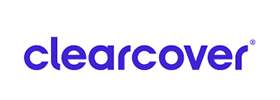College gives young people more than a degree. It is also offers critical thinking skills while forcing young people to manage independent living.
But is it necessary for everyone?
Many jobs do require a college degree, and graduates do tend to make more money.
In college, you’re acquiring lifelong skills like critical thinking, organization, problem-solving, and teamwork. You also have access to counselors, career centers, internships, job fairs, clubs, and volunteer opportunities to intensify your marketability after graduation.
However, the Federal Reserve Bank of New York reports that 43 percent of today’s college graduates work in a job that doesn’t require a degree. A 2017 Gallup survey revealed that 51 percent of Americans who went to college would consider changing their degree, major, or institution. Moreover, The National Center for Education Statistics found that only 59 percent of college students get their degree within six years.
Try to determine whether the money you’ll earn with a degree will be worth what you’ve paid for it. If you’re not entirely sure about your career choice, you may later regret going to college at all.
While a college degree can open doors, sheer ambition, determination, and willingness to work open others. Do not dismiss such alternatives as trade schools, community colleges, and apprenticeships, among others. Becoming a real estate agent, medical assistant, or web developer doesn’t require a college degree. Capitalize on your entrepreneurial spirit by starting your own business through websites like eBay, Amazon, and Etsy. Take free online classes, learn a trade skill, or earn an associate degree at a community college, among other possibilities.
Most people invest in college to prepare for a productive and rewarding future. This pursuit is viable when you know what you want, manage your expectations, and intend to pay for everything from your own pocket. If necessary, apply for scholarships, find a part-time job, maybe even take a few semesters off to save up before you leave for college.
This way, you may earn a college degree without being haunted by a student loan for years and maybe decades to come.







































